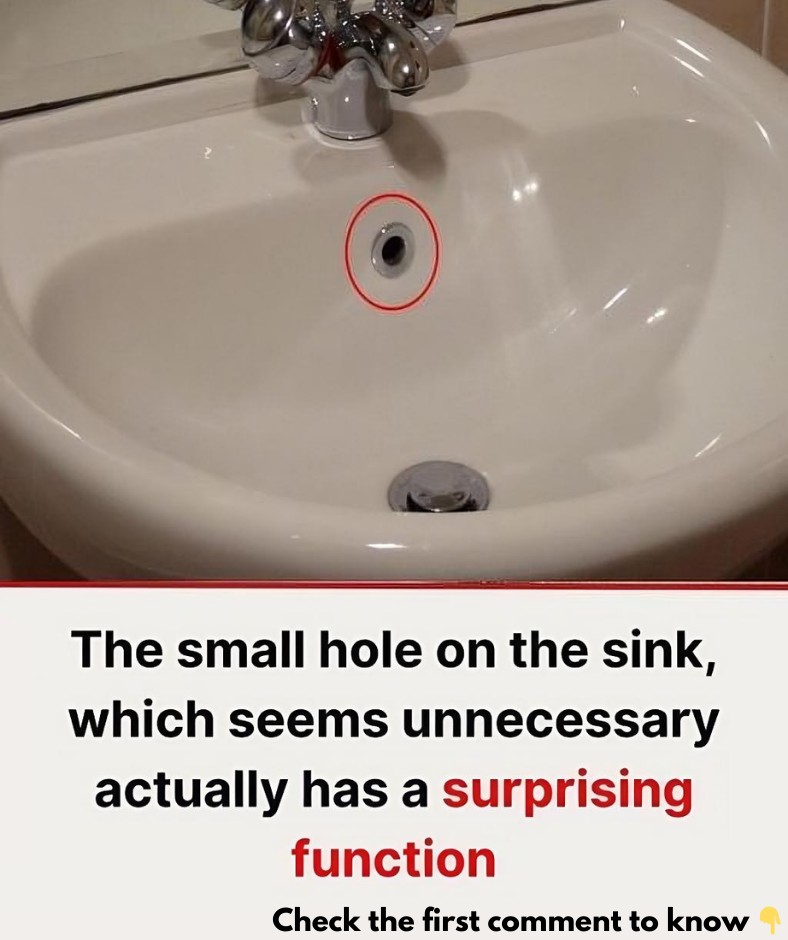Have you ever noticed a tiny hole just below the faucet in your bathroom sink and wondered what it’s for? At first glance, it might seem like a minor design feature, but this little opening—known as the overflow hole—serves an important purpose. It plays a critical role in preventing water damage and ensuring your sink functions properly. In this article, we’ll explore why the overflow hole exists, how it works, and some simple ways to maintain it for a clean, efficient bathroom.

What Is the Overflow Hole and Why Is It Important?
The overflow hole is strategically placed about one-third of the way up the basin of your bathroom sink. Its primary purpose is to prevent water from spilling over the edges of your sink and onto your floor. While it might look like a small, inconsequential detail, this feature is a vital safeguard against accidental flooding.
By giving excess water an escape route, the overflow hole acts as a safety net for common scenarios where water levels might rise too high, such as leaving the faucet running or encountering a clogged drain. It’s a small yet powerful example of thoughtful design.
How the Overflow Hole Works
The overflow hole is connected to a secondary drainage channel that links to the main plumbing system beneath your sink. Its job is straightforward: when water levels in the sink get too high, the overflow hole redirects the excess water down this channel, preventing it from spilling out and creating a mess.
Think of the overflow hole as a backup system. While the primary drain handles most of the water, the overflow hole steps in when needed, ensuring your bathroom remains dry and free of potential water damage.
Practical Benefits of the Overflow Hole
The overflow hole might not seem like a big deal—until it saves the day. Here are a few real-life situations where this feature proves invaluable:
- Forgotten Faucets: It’s easy to get distracted and accidentally leave the faucet running, especially in a busy household. The overflow hole prevents water from spilling over the basin, buying you time to catch the mistake.
- Clogged Drains: If your sink’s main drain becomes blocked, water can quickly back up. The overflow hole provides a secondary exit point, helping to avoid a flood.
- Everyday Uses: Whether you’re hand-washing clothes, cleaning items, or filling the sink for another purpose, the overflow hole ensures water won’t overflow, even if you forget to turn off the faucet in time.
The Drawbacks: Hygiene and Maintenance Challenges
While the overflow hole is undeniably useful, it’s not without its downsides. Because it’s tucked away in a hard-to-reach spot, it can easily accumulate grime, mold, and bacteria. Bathrooms are naturally humid environments, and the moisture trapped in the overflow hole creates an ideal breeding ground for unwanted growth. Over time, this can lead to unpleasant odors and hygiene issues.
Regular maintenance is essential to keep the overflow hole clean and functioning effectively.
How to Clean and Maintain the Overflow Hole
Fortunately, maintaining the overflow hole is simple with a little effort and some common household items. Here’s an effective cleaning method:
- Prepare a Cleaning Mixture: Mix equal parts vinegar and baking soda. This natural combination is safe, eco-friendly, and highly effective at breaking down grime.
- Apply the Mixture: Pour the vinegar and baking soda mixture directly into the overflow hole. The fizzing action helps dislodge dirt and dissolve bacteria or mold buildup.
- Let It Work: Allow the solution to sit for 5–10 minutes. This gives it time to tackle the grime and kill germs.
- Flush with Warm Water: After letting the mixture sit, pour warm water down the overflow hole to rinse away any residue.
For best results, clean the overflow hole every few months. Regular maintenance prevents buildup, eliminates odors, and keeps your bathroom smelling fresh.
Additional Tips for a Cleaner Sink
Maintaining your bathroom sink goes beyond just cleaning the overflow hole. Here are some extra tips for keeping your entire sink fresh and functional:
- Use a Sink Strainer: A strainer catches debris and hair, reducing clogs in both the main drain and the overflow channel.
- Flush Weekly: Pour hot water down the sink’s drain weekly to dissolve soap scum and prevent grime accumulation.
- Opt for Natural Cleaners: Regularly use baking soda and vinegar to clean your sink and plumbing system without harsh chemicals.
- Avoid Strong Chemicals: Harsh drain cleaners can corrode pipes over time. Stick to natural alternatives to protect both your plumbing and the environment.
The Overflow Hole: A Smart, Subtle Design Feature
The overflow hole is a small but essential feature that reflects thoughtful engineering in your bathroom sink. While easy to overlook, it prevents significant water damage and ensures your sink stays functional, even during minor mishaps. By taking a few minutes every few months to clean this hidden hero, you can keep your bathroom fresh, hygienic, and problem-free.
Conclusion: Appreciating the Little Things
The overflow hole might not be the most glamorous part of your bathroom, but it plays a crucial role in maintaining functionality and preventing water damage. By understanding its purpose and committing to regular maintenance, you can ensure it remains effective for years to come.
Next time you notice that small hole below your faucet, take a moment to appreciate its value—and give it the care it deserves. It’s one of those small details that proves the brilliance of good design in even the simplest fixtures.





